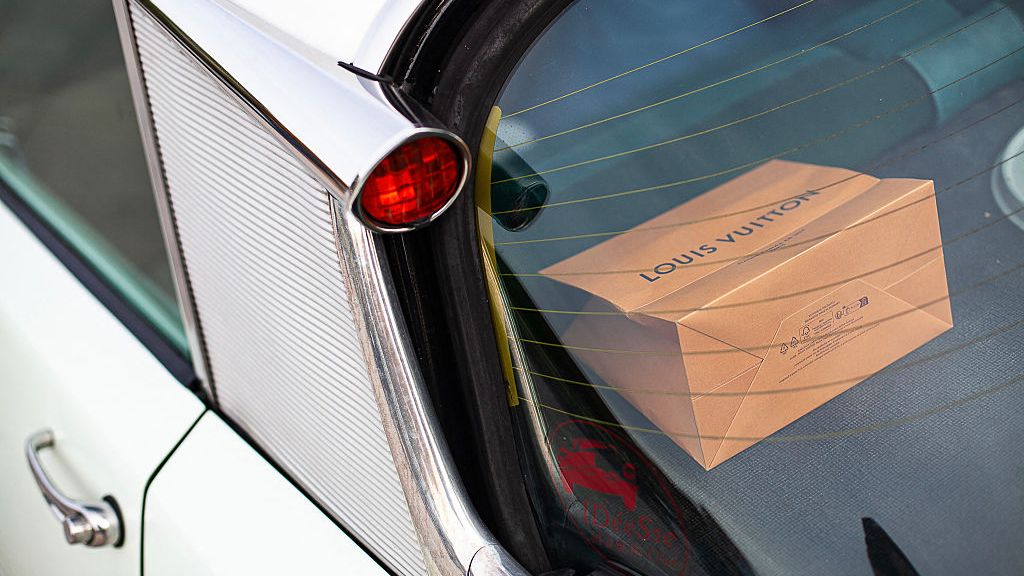Louis Vuitton has always been on the move. Before the French fashion house became a fixture on runways and red carpets, it was a problem-solver for travelers—crafting trunks that could survive ocean crossings, train rides, and rough handling on bustling platforms. Now, a new 406-page book, From Louis to Vuitton, published by Assouline, celebrates the brand’s history of innovation, and retraces how its own identity was shaped by transportation itself.
Told through 320 images, the tome begins with the invention that changed everything: the flat-topped, stackable trunk. The piece of luggage wasn’t just elegant, either; it was practical, designed to fit neatly in the holds of ships and on train carriages. Across the century and a half that followed, Louis Vuitton adapted its craftsmanship to every mode of transport imaginable: rail, sea, air, and now, the racetrack. From Louis to Vuitton charts the house’s relationship with movement in all its forms. The Hemingway literary trunk, built to hold manuscripts on the go, sits alongside modern creations tied to F-1 and the America’s Cup.
History and innovation sit side by side throughout the book. Find sleek imagery of Formula 1 cars and sailing vessels adjacent to archival photos of the Asnières workshop, founded by Louis Vuitton in 1859. It’s where each bespoke trunk and hard-sided case is still handcrafted by artisans using a blend of 19th-century techniques and modern technology today.
In collaboration with Formula 1, Louis Vuitton now also designs the official trophy trunks—handcrafted in the Asnières workshop and custom-built from poplar wood and coated canvas, reinforced with brass corners and leather trim. The trunks travel the F-1 circuit from Monaco to Miami, designed to protect the championship trophies through every transfer, handling, and race-day commotion. On the water, its partnership with the America’s Cup follows a similar philosophy: artisans spend more than 400 hours creating bespoke, water-resistant, and compact trunks to house both the Auld Mug and Challenger trophies.
Even the book’s limited-edition case—with just 54 custom trunks produced—ties back to that lineage. Vuitton has long made trunks for books, like Hemingway’s to one-of-a-kind commissions for collectors. Regardless of their purpose, Louis Vuitton’s early trunks were meant to last—coated canvas, brass corners, and reinforced stitching made them companions to invest in—and those same design principles continue in the house’s contemporary luggage: lightweight aluminum frames on the Horizon cases by Marc Newson, double-zip security systems, and interiors designed for increased structural strength and packing space.
More Louis Vuitton bags we love
Here, we round up a few modern-day pieces from the book that you can purchase for a timeless travel collection of your own.




